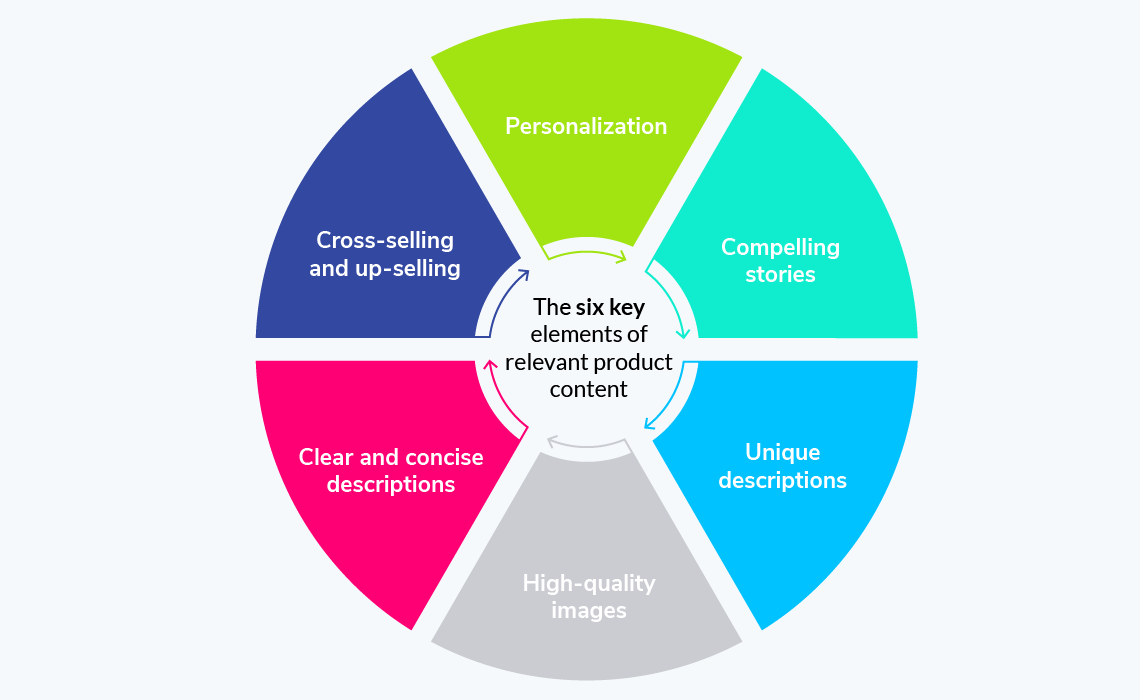In the omnichannel age, a compelling product experience is the difference between success and failure. Today’s buyers no longer base their purchases on price and product alone; they also focus on their experience with a brand. Indeed, 73% point to experience as a key factor in their purchasing decisions, behind price and quality. As consumers increasingly rely on digital commerce, brands are challenged to keep up with the content demand while delivering accurate and relevant product information.
But it’s not enough to just provide more content. It’s now crucial to deliver the product content your customers need, when they need it, in a compelling and valuable way. Therefore, the product experience must be contextual and consistent across all sales channels — from ecommerce to print to physical stores. But often, brands don't realize they aren't delivering a consistent brand experience. In fact, 87% of consumers think businesses need to do more to provide a seamless experience. And with 32% of customers ditching a brand they loved after one bad experience, brands have little room for mistakes.
So, what’s causing the gap between the product experiences businesses deliver and the actual experiences customers expect? Two words: data quality. The quality and completeness of product content significantly impact online sales and brand loyalty. After all, 85% of shoppers consider product information and pictures important when deciding which brand or retailer to buy from. So why does data quality matter so much to product experience? And how can it bridge the gap between what brands deliver and what customers expect?
What is a product content strategy?
A product content strategy is an action plan that helps you create and manage high-quality product content. It must happen at multiple levels so that the organization has an aligned and scalable content capability. Product content is any content that strategically integrates a product into the sales narrative and uses it to illustrate a point, solve a problem, or help the customer achieve a goal. The goal of a product content strategy is to create and maintain relevant product content to help customers easily find what they need. It enables you to achieve your goals and increase sales by ensuring that your customers have all the information they require to make a purchasing decision.
Product content strategy is different from a conventional web content strategy as it includes a product-centric approach that contributes directly to product metrics. Creating a product-based content strategy involves identifying a business goal and user needs and defining the most effective strategy that meets them. Your strategy will include several processes and tasks, such as doing research, measuring success, and defining the voice and tone of the content. It should also factor in your internal resources and publication channels.
Why does product content matter?
Product content functions as a brand’s most persuasive salesperson online and is the most critical element in the consumer’s path to purchase. A consumer considering buying almost always lands on the brand’s website. With 87% of customers beginning their product search on digital channels, it’s imperative for brands to ensure that visitors find only accurate, complete, enriched, and up-to-date product content on their product page. They must ensure that all the information customers need is on that page, including reviews, ratings, pricing, and delivery information.
The impact of poor product content on digital sales is most apparent in three areas: returns, shopping cart abandonment, and brand trust. In fact, 50% of shoppers have returned a product because it did not match its description. This discrepancy between the product ordered and received is one of the leading causes of customer frustration. The result: 87% of consumers would be unlikely or very unlikely to make a repeat purchase with a retailer that misguided them through inaccurate or insufficient product information. This poses a problem: How can businesses efficiently manage product content to avoid losing sales and brand trust?






